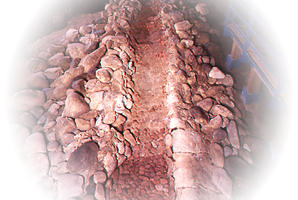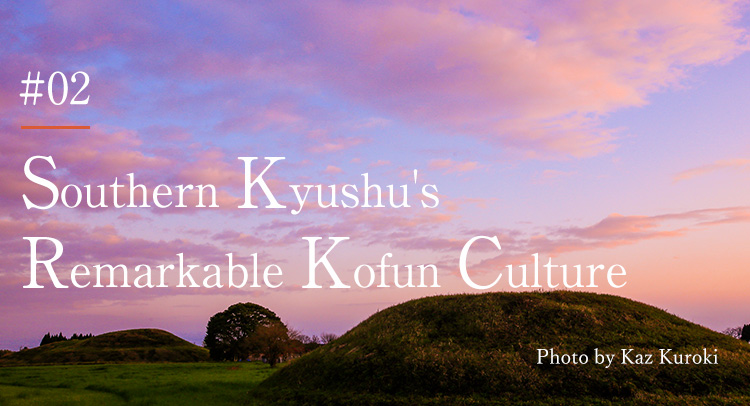Photo by Kaz Kuroki
Unique burial concepts: Diversity of tomb systems
埋葬思想の独自性~多様な墓制~

埋葬思想の独自性~多様な墓制~

Saitobaru Mound №46
Kofun are large mounded tombs constructed from compacted soil. Estimates suggest that somewhere in the region of 160,000 to 200,000 kofun were built throughout the Japanese archipelago (excluding Aomori and Hokkaido in the north, and the whole of the archipelago south of the Osumi Peninsula). There are two basic types of kofun: “circular burial mounds” and “square burial mounds.” “Keyhole-shaped burial mounds,” which combine the plane figures of both these basic forms, are unique to the Japanese archipelago.
In southern Kyushu (today’s Miyazaki Prefecture, Kagoshima Prefecture and southern Kumamoto Prefecture), there are very few square mounds or keyhole-shaped burial mounds with a quadrangular rear section, which tend to exhibit more regional tendencies. Instead, southern Kyushu’s highly distinctive burial culture is characterized by underground tunnel tombs and stone slab tombs.
While the data can be interpreted in several different ways, some estimates suggest that more than 5,000 keyhole-shaped burial mounds were built. What is clear, though, is that there are in the region of 300 tombs with a length of 100 m or above, 123 of 120 m or above, 75 of 150 m or above, and 37 of 200 m or above.
10 or more keyhole-shaped burial mounds with a length of 100 m or above were built only in the following areas: in Kanto, Kozuke Province (Gunma Prefecture) and Shimosa Province (northern Chiba Prefecture, part of Ibaraki Prefecture); in Chugoku, Kibi Province (Okayama Prefecture, eastern Hiroshima Prefecture); and in Kyushu, Hyuga Province. These tombs are concentrated overwhelmingly in the Kinai region; however, the construction of gigantic kofun in Kibi Province and Hyuga Province overlaps with the period of construction of similar kofun in the Kinai region, thus coinciding with the period of formation and expansion of the Yamato Kingdom. These facts suggest that both regions occupied an important position within the Japanese archipelago.

Saitobaru Mound №206 (Oninoiwaya Kofun)
Corridor-style Stone Chambers
Tombs in East Asia underwent a major transformation, from pit-type burial facilities such as pit-style stone chambers to tunnel-type burial facilities. These tunnel-type burial facilities spread throughout East Asia under the influence of the Chinese mainland (brick-chambered tombs), passing south on the Korean Peninsula from Koguryo to Paekche and Kaya, and then on to the Japanese archipelago. Stone chambers appeared from the second half of the 4th century to the beginning of the 5th century. In northern Kyushu, stone chambers with a side entrance appeared, which then developed into corridor-style stone chambers. While these stone chambers were only found in a limited number of areas during the 5th century, including Kinai, by the 6th century they were being built throughout the Japanese archipelago.
At the same time, burial pits (coffins made from wooden planks) with a side entrance appeared in southern Kyushu, which led to the development of underground tunnel tombs. This burial culture originating from southern Kyushu, in which a hollow burial space (burial chamber) is dug into the ground, spread to northern Kyushu along the coast of Suonada during the latter half of the 5th century as tunnel tombs with a hollow burial chamber dug into the hillside. From there it moved northward, and was adopted over a wide geographical range as far north as southern Tohoku (northern Miyagi Prefecture).




